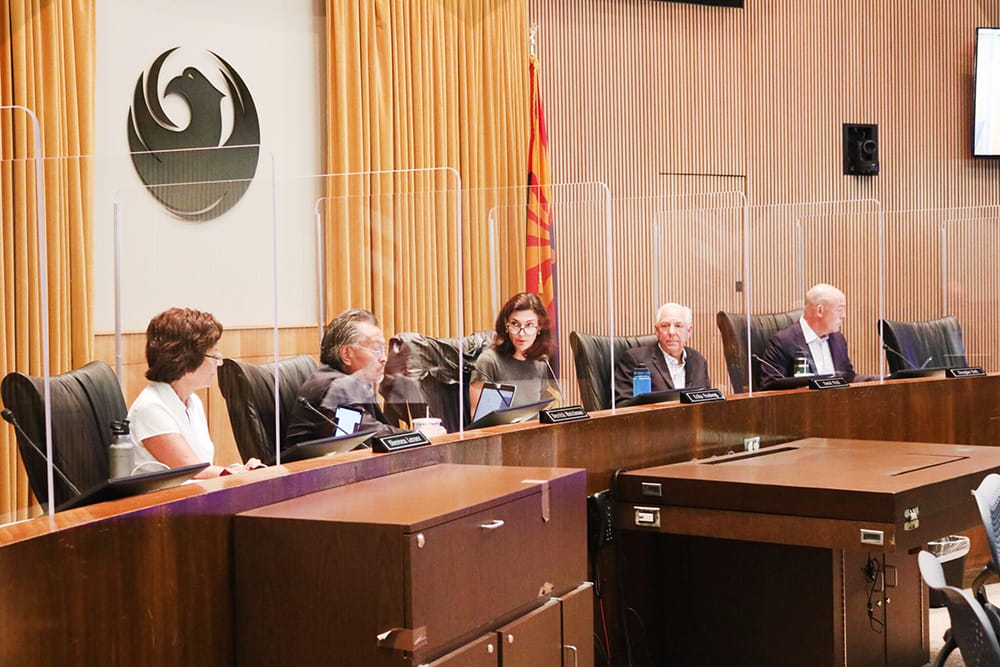Members of the Arizona Independent Redistricting Commission met Oct. 4, 2021, in the Phoenix city council chambers to discuss initial changes to the grid maps approved the previous month. L to R: Shereen Lerner, Derrick Watchman, Erika Neuberg, David Mehl, Douglas York. /Photo by Jeremy Duda | Arizona Mirror
By Jeremy Duda | Arizona Mirror
As the Arizona Independent Redistricting Commission draws the state’s new congressional and legislative maps, the debate over competitiveness is once again moving to the forefront.
The decennial battle over competitiveness at the AIRC is fraught with partisan overtones. The stakes are high for both parties, especially when it comes to the legislative districts that the state will use for the next 10 years.
For Democrats, competitiveness represents at least a potential opportunity to win control of the legislature, which has been in GOP hands for an almost unbroken stretch dating to the 1960s. More competitiveness often makes for less proportional outcomes, which aids minority parties. Republicans make up about 35% of the electorate in Arizona, while Democrats are about 32%.
Many advocates also view competitiveness as a way to get the extremes out of politics. In a district where a candidate must appeal to the center, not just to the left or the right, more moderate lawmakers are likely to get elected, they say.
Raquel Terán, chairwoman of the Arizona Democratic Party, argued in a recent letter to party activists that the GOP’s opposition to competitiveness constituted “voter suppression.”
“Unlike the GOP, Arizona Democrats are not afraid of the voters, we are not afraid to compete,” she said.
Conversely, Republicans largely view Democrats’ push for competitiveness as an attempt to manipulate the map so they can win majorities in the legislature, despite being the state’s minority party.





